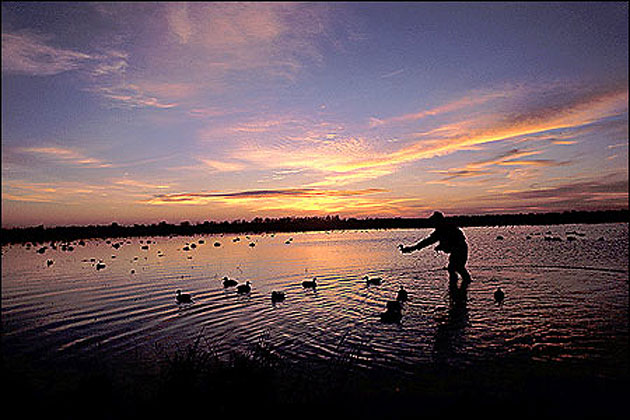
W.H. Fuller was an Ohio native who came to Arkansas by way of Nebraska in 1895. In 1904, he grew what is generally considered Arkansas's first successful commercial rice crop, producing 5,225 bushels on 70 acres.
While others were also experimenting with rice, it was Fuller's success that brought about the onset of "rice fever," with thousands upon thousands of Grand Prairie acres changing hands and being planted in rice. Within 40 years, the native prairie had all but vanished, Stuttgart's skyline of agricultural drying and storage facilities was rising and Arkansas was on its way to leading the U.S. in rice production.
Other changes would ensue as well. Until the coming of drying facilities, harvested rice was left to dry in the fields, drawing southward-bound waterfowl in great numbers to feed. The Prairie's underlying layer of clay eased the construction of reservoirs for irrigation and they became another attraction for the ducks and geese. While the prairie chickens were on the way out, the Grand Prairie was becoming a nationally known venue for hunting ducks.












